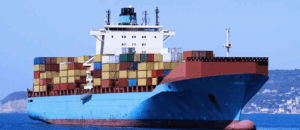ExactEarth Focuses on AIS to Spark Growth
[Via Satellite 01-23-2017] ExactEarth, a Canadian company that provides satellite Automatic Identification System (AIS) data services, saw a huge drop in earnings in 2016, but is looking to newly struck contracts and collaborations to boost revenues in the coming year. The company rang in $14.2 million (CA$18.9 million) in revenue in 2016, a big dip from $20 million in 2015.
“The primary factor in the drop was a difference in revenue generated from the government of Canada year-over-year. Revenue generated by this customer was approximately CA$7.5 million lower in 2016 than it was in 2015,” said exactEarth CFO Sean Maybee speaking on a Jan. 19 conference call.
While the company beat out rival Orbcomm for the Canadian government contract renewal agreement, the value was significantly lower than anticipated, coming in at $87,000 and expiring in March, a much lower value than the $14.5 million at which the contract was previously valued.
According to exactEarth President and CEO Peter Mabson, an inquiry into the contract prompted the Canadian government to issue a new public Request for Proposals (RFP) for satellite AIS services in October. “Submissions were made in December and we currently await the result of their selection process,” noted Mabson during the call.
For now, the company is looking to expand the reach of its satellite services beyond the Canadian government through new partnerships.
“Notable signings in 2016 included our distribution agreement with EV Image, which will help open up the Chinese market for us as well as other Asian markets,” said Mabson, adding that in early 2017 the company had signed a five-year agreement with another unnamed Asian country that will see a base minimum of $2 million in revenue for the company. “We also announced our participation in the Airbus and Telespazio France consortium to provide services to the French Navy.”
Through the four-year contract announced in June, exactEarth will provide a satellite AIS data feed of the French economic exclusion zone, which encompasses 11 million square kilometers, to Telespazio France, which will provide a viewing capability to several users in the French Navy.
Further government contracts also worked to expand the company’s AIS base. On Dec. 29, the U.K. Space Agency awarded exactEarth a $1.3 million (1.1 million pounds) grant to deploy small vessel tracking technology, called exactTrax, to improve Safety Of Life At Sea (SOLAS) for South Africa’s small boat owners and operators — in particular the artisanal fishing sector.
The company also signed a contract with Antrix Corporation, the commercial arm of the Indian Space Research Organization (ISRO), to provide satellite AIS data services to the Indian Navy in order to keep track of India’s maritime activity. The three-year subscription revenue contract is valued at $1.75 million in total.
Subscription based-revenue accounted for 81 percent of total revenue for the year.
Going forward, Mabson said the company is taking several steps to bolster its offerings, including expanding its presence in the maritime information and analytics market. In an effort to provide real-time data analytics, exactEarth acquired Larus Technologies, an Ottawa-based provider of adaptive learning and predictive analytics software, in the second quarter.
Furthermore, the company is looking out to the end of 2018, at which point it will launch its second-generation exactView RT constellation, operated by Harris. The constellation will deliver a real-time advanced ship tracking solution.
“Ultimately, exactView RT will consist of more than 60 payloads, including in-orbit spares, aboard the Iridium Next constellation, with all satellites scheduled to be in orbit by the end of 2018,” said Mabson, noting that the company is looking to bring the satellites into service in the next few months. “This will be a key catalyst to enhance refresh times and to ultimately deliver real-time global satellite AIS data and to support our analytics-based products.”
